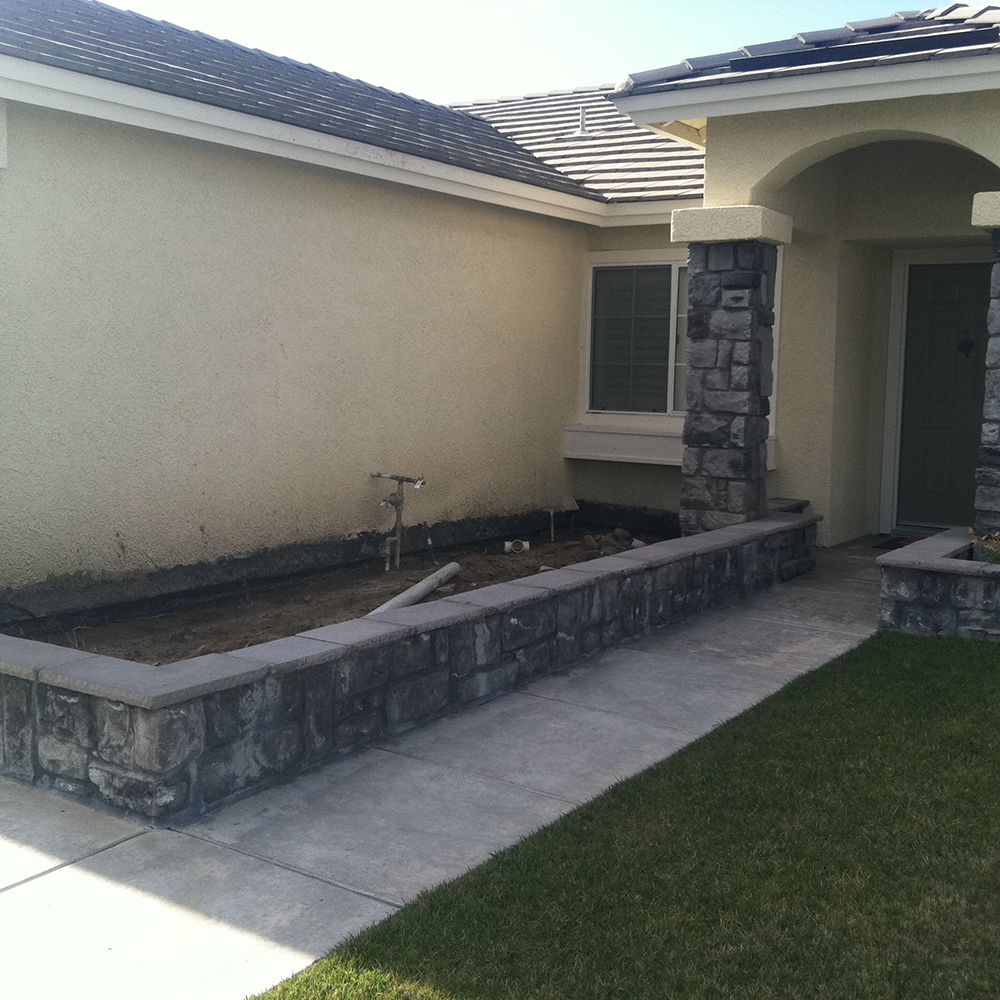
Have you ever seen a retaining wall that has become cracked and discolored? The most likely cause for this problem is that the contractor didn’t take proper steps to ensure adequate drainage of water from behind the wall.
It’s important to remember with retaining walls that whenever it rains, the wet soil behind the wall creates tremendous pressure on the structure. Wet dirt wants to move, so it is pressing forward on the wall, causing the potential for damage. When building a retaining wall, it’s important to install a proper drainage system in order to prevent damage from this pressure. Otherwise, the force of wet dirt pressing forward will lead to cracks in the wall and an unstable structure.
We frequently see these types of situations, in which a retaining wall is cracking, discoloring, the stucco is coming off, or algae is growing on the wall. That’s why our process for building retaining walls includes several steps to prevent these problems and provide the homeowner with a quality, attractive, and long-lasting structure. When building retaining walls, we install a drain right above the footing at the base of the wall. Another drain is placed at the top of the wall, which collects heavy wet clay soil and prevents pressure from building behind the wall.
Finally, the wall must be properly sealed so that water cannot seep through the structure; this sealing process will direct water through the drains. Skipping this step is what causes discoloration of the wall, loss of stucco, and algae growth. An improperly sealed wall will not only be a safety issue, but it will also become an eyesore.
Many contractors are throwing up cheap walls without taking these necessary steps. The work might be less expensive initially, but the wall won’t last and will need to be redone correctly in the future. This always ends up costing more than installing the wall properly the first time would have. When hiring a contractor to build a retaining wall, always be sure to investigate the plan for proper sealing and drainage before the construction begins; otherwise you may spend money on a low-quality job that has to be completely redone in the future.







Write a comment: